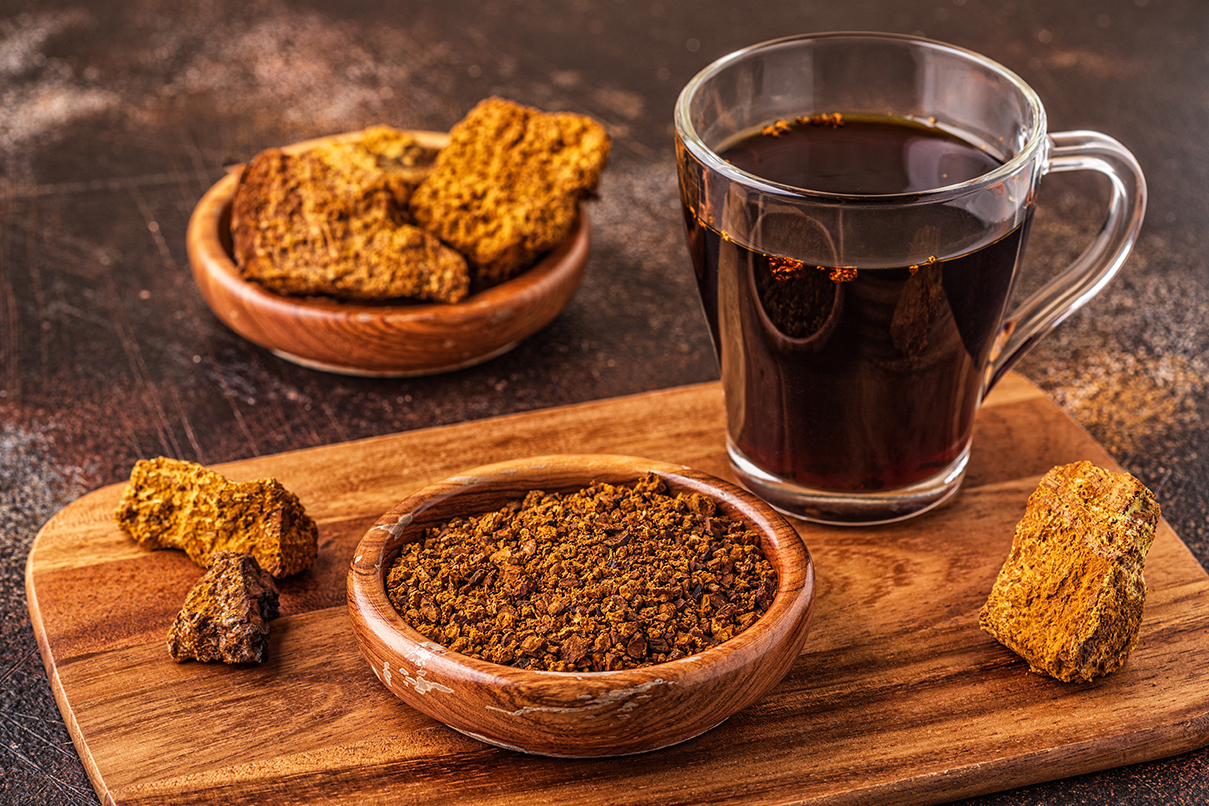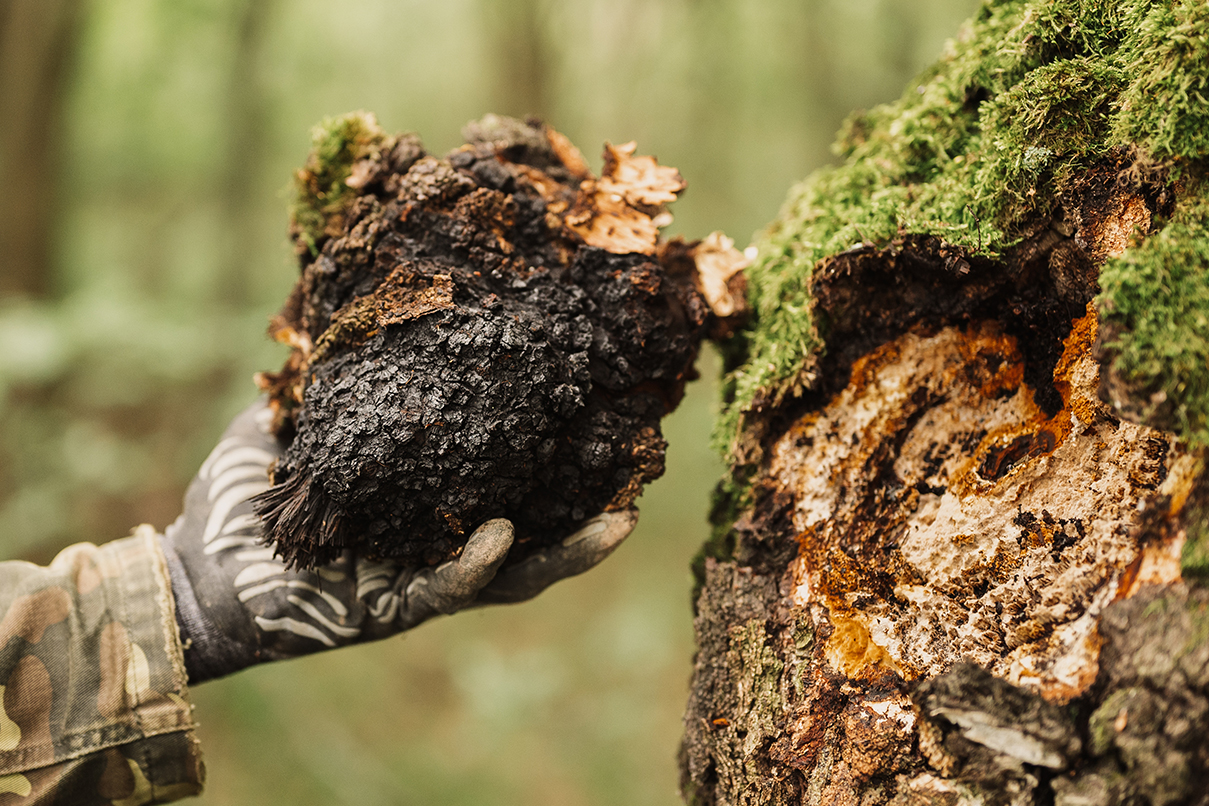Let’s talk about Chaga, an amazing natural wonder you might not have heard much about. Its botanical name is Inonotus obliquus, but most people call it Chaga. It’s not technically a mushroom but a dense clump of mycelium (like the hidden part of a mushroom) that grows mainly on birch trees in really cold places like Russia, northern Europe, and parts of North America.
A Bit of History
Chaga has been used for centuries, especially in Russia, where it’s even called “The Mushroom of Immortality.” It became famous after Aleksandr Solzhenitsyn’s novel Cancer Ward, which told the story of a doctor who noticed his patients who drank Chaga tea seemed to stay cancer-free. That wasn’t just a lucky guess—scientists in Russia started studying Chaga. By 1955, it was officially recognized as a treatment for cancer there.
Why Is It So Special?
Chaga grows in harsh conditions—think freezing winters and blazing summers. To survive, it produces some incredible compounds that are also great for us. Here are a few key ones:
- Beta-glucans: Help regulate the immune system and stabilize blood sugar.
- Vitamin D: Boosts immunity and is handy during long, dark winters.
- Melanin: A powerful antioxidant that helps protect cells.
- Betulinic acid: Derived from birch trees and is known for anti-inflammatory and anti-cancer properties.
Chaga has an insanely high antioxidant score, which means it’s fantastic at fighting free radicals. These little troublemakers can damage our cells.
What Can It Do for You?
Chaga isn’t just another trendy health supplement; it offers real benefits:
- Boosts your immune system: It helps regulate your immune response so you don’t overreact or underreact to health challenges.
- Reduces stress: Chaga is an adaptogen, meaning it helps your body handle stress, whether it’s physical, emotional, or environmental.
- Improves digestion: It acts as a digestive aid, supporting nutrient absorption and helping with inflammation in the gut.
The Art of Harvesting
Because Chaga grows so slowly (it takes 3–5 years to mature), it’s crucial to harvest it sustainably. When foraging, you should only take a portion and leave plenty behind so the tree and the Chaga can continue to thrive. Overharvesting is a real issue, so look for ethical suppliers if you’re buying it.
Chaga’s relationship with birch trees is also fascinating. Some say it’s parasitic, while others believe it helps heal the tree. Either way, the connection between the two gives Chaga its unique healing properties.
How to Use Chaga
There are a few popular ways to prepare Chaga, depending on what you’re looking for:
- Chaga Tea: This is the classic way to enjoy it. Simmer chunks of Chaga in water for several hours to release its beneficial compounds. The result is an earthy, slightly sweet tea you can drink daily.
- Tinctures: You can make a dual-extraction tincture for a more potent extract. First, simmer Chaga in water, then soak it in alcohol for several weeks. Combining the two gives you the best of both worlds.
- Powdered Supplements: These are convenient, but make sure the product is high quality and processed properly to preserve its medicinal benefits.
Things to Keep in Mind
Chaga is generally safe, but there are a few precautions:
- If you’re on blood thinners or diabetes medications, talk to your doctor first since Chaga might interact with them.
- There’s no research on its safety during pregnancy or breastfeeding, so it’s better to avoid it in those cases.
Why Chaga Is Worth It
Chaga isn’t just a trendy “superfood.” It’s a natural powerhouse that supports your immune system, helps with stress, and even aids digestion. Plus, it’s delicious in a warm cup of tea! Just remember to source it sustainably and respect the balance of nature.
If you’re curious about trying Chaga, start with a simple tea and see how your body feels. It’s a beautiful way to connect with the healing power of nature.




